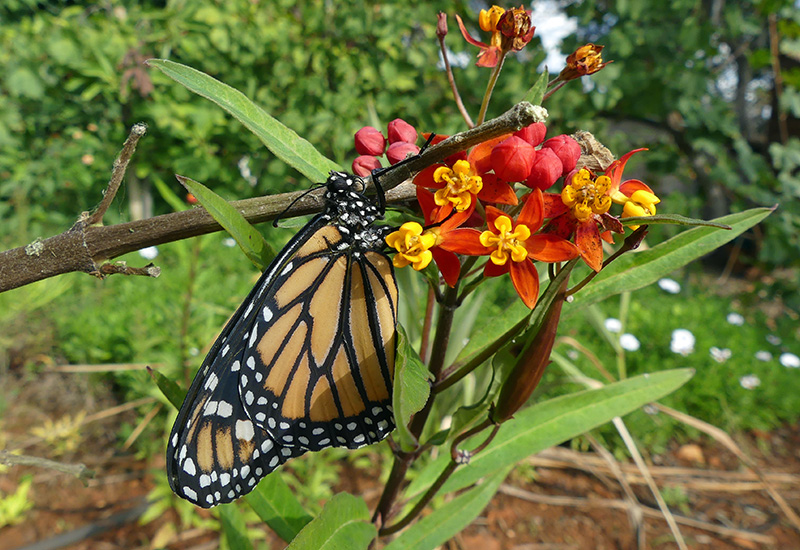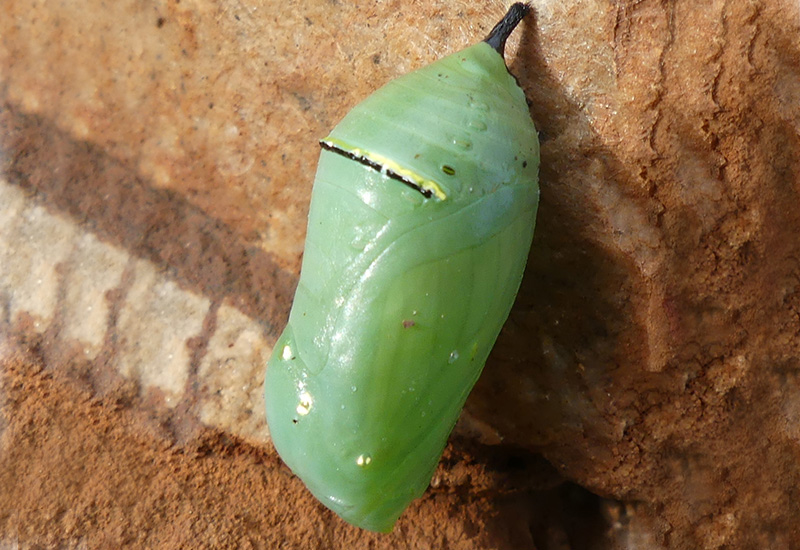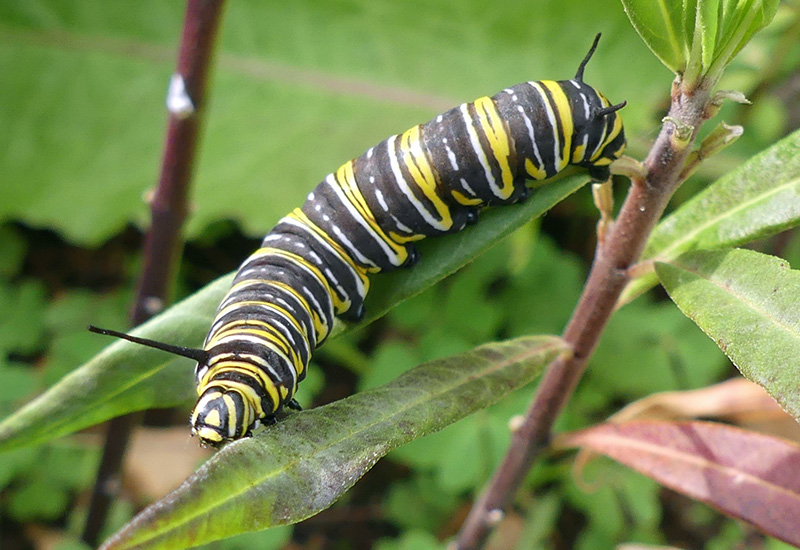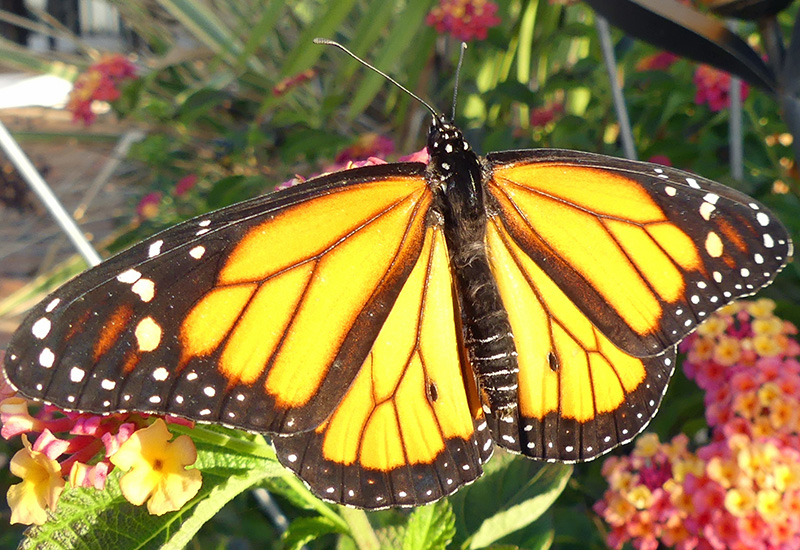Something rather wonderful is happening in our garden at the moment. Spring is in the air and new life is materialising before our very eyes.
After trying for years, we have discovered many different-sized monarch butterfly caterpillars in our wild area seeded with milkweed and silkweed specifically planted to encourage these marvellous butterflies to breed. Only once before have we had these caterpillars in our garden, but sadly, on that occasion, they were all eaten and none made it to adulthood. We have even found a chrysalis, which is very exciting.
Monarch butterflies are unmistakable, with a wing span of about ten centimetres. They are large butterflies with bright orange wings edged with a black border with white spots and a latticework of black veining. They are native to North America and are renowned for their annual migration travelling between two and four thousand kilometres from the high mountain forests of central Mexico to the north-eastern United States or south-east Canada.

Monarchs produce four to five generations in a year, but only the last migrates and consequently can live for up to eight months rather than the more usual four to six weeks. At some point, some monarchs must have been blown off course during the migration and are now found in the Azores, the Canary Islands, Madeira and southern Portugal and Spain.
They are very specific with their food requirements and feed on milkweeds and silkweeds on which the females lay their eggs. As both of these plants are poisonous, the caterpillars build up toxins from the plants, which makes them unappetising to potential predators. The caterpillars are easy to identify as they are plump with black, yellow and white stripes with two sets of antennae at either end of their bodies. They grow up to five centimetres long when mature. After two weeks, the caterpillars form a beautiful green chrysalis with distinctive bands of yellow around the top and gold spots on the bottom. As the chrysalis matures, it is possible to see the orange and black colouring of the butterfly inside it. After about two weeks, the butterflies should emerge and so the cycle of life continues.

Sadly, monarchs are heading towards extinction mainly due to loss of habitat and herbicides which have killed off the milkweed on which the butterflies rely for food. According to one study in January 2021, only two thousand butterflies overwintered in California, which is a 99.9% reduction since the 1980s. I was lucky enough to be living in California in the mid-1990’s and actually saw the monarchs hibernating in the damp forests near Monterey. It was an unforgettable sight, with trees literally blanketed with thousands of butterflies.

In order to support the life cycle of this stunning butterfly, I urge you to plant milkweeds and silkweeds in a spare small piece of ground that you’re not using. They are easy to grow with low water requirements. They are somewhat promiscuous, though, so you might have to keep an eye on where they spread. Personally, I think a little judicious thinning out and weeding is well worth the reward of the beautiful monarch butterfly breeding in my garden.
Tamsin Varley is a member of Clube Dos Bons Jardins, a small, friendly multi-national garden club that meets at different locations around the Algarve on the 2nd Tuesday of every month except over the summer, with an optional lunch afterwards.













